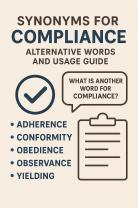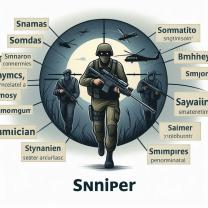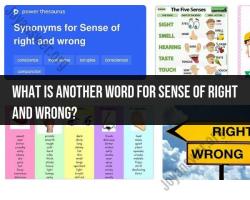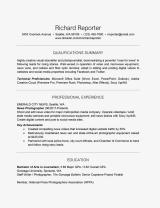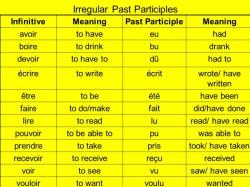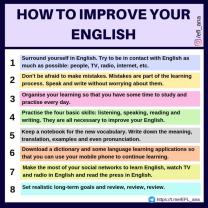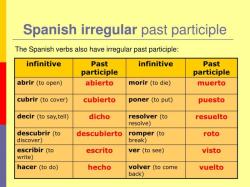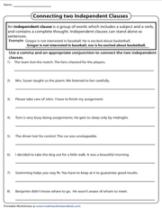What is language definition?
Language definition refers to the process of formally describing and specifying the characteristics, structure, and rules of a particular language, whether it's a programming language or a natural language used for communication between humans. This definition helps users, whether they are programmers or linguists, understand how the language works and how to use it effectively.
Here are two key contexts in which language definition is relevant:
Programming Languages:
- In the context of programming, language definition refers to the formal specification of a programming language's syntax, semantics, and rules. This definition helps programmers write code that adheres to the language's standards and can be executed by a computer. Key elements of a programming language definition include:
- Syntax: Describes the structure and grammar of the language, including how to form valid statements and expressions.
- Semantics: Defines the meaning of the language constructs, such as how operations are performed and the expected results.
- Data types: Specifies the types of data that can be manipulated within the language.
- Control structures: Describes how program flow is controlled, including loops, conditionals, and function definitions.
- Popular programming languages like Python, Java, C++, and JavaScript have well-documented language definitions that guide developers in writing code.
- In the context of programming, language definition refers to the formal specification of a programming language's syntax, semantics, and rules. This definition helps programmers write code that adheres to the language's standards and can be executed by a computer. Key elements of a programming language definition include:
Natural Languages:
- In the context of natural languages, language definition involves describing the structure, grammar, vocabulary, and rules of a language used for communication among humans. Linguists and language experts study and document these aspects to understand how languages work and evolve over time. Language definition includes:
- Grammar: The rules governing the structure and formation of sentences and phrases.
- Syntax: How words are arranged to convey meaning.
- Semantics: The study of meaning in language, including word meanings and how context affects interpretation.
- Lexicon: The vocabulary and words specific to a language.
- Phonetics and phonology: The study of speech sounds and pronunciation.
- Pragmatics: How language is used in social and communicative contexts.
- Natural languages like English, Spanish, Chinese, and thousands of others each have their own unique language definitions.
- In the context of natural languages, language definition involves describing the structure, grammar, vocabulary, and rules of a language used for communication among humans. Linguists and language experts study and document these aspects to understand how languages work and evolve over time. Language definition includes:
Language definition is crucial in both programming and linguistics because it provides a standardized framework for communication and understanding. In programming, it ensures that code is interpretable and executable by computers. In linguistics, it helps researchers and educators analyze, describe, and teach languages effectively.
Defining Language: A Comprehensive Examination
Language is a complex system of communication that is used by humans to express themselves and to interact with others. It is made up of a set of rules and conventions that govern how words are used to form sentences and to convey meaning.
There is no single definition of language that is universally accepted, but it is generally understood to be a system of arbitrary symbols that are used to represent objects, ideas, and concepts. Language is also a social construct, meaning that it is created and used by people in order to communicate with each other.
Language is used in a wide variety of contexts, including:
- Personal communication: Language is used to communicate with friends, family, and other loved ones. It can be used to express emotions, share thoughts and ideas, and to build relationships.
- Professional communication: Language is used in the workplace to communicate with colleagues, clients, and other stakeholders. It can be used to give and receive instructions, to share information, and to negotiate agreements.
- Public communication: Language is used in public settings, such as schools, universities, and government offices. It can be used to teach, to inform, and to persuade.
Language is an essential part of human society. It allows us to communicate with each other, to share our thoughts and ideas, and to build relationships. It also allows us to learn and grow, and to participate in the world around us.
Language in Context: Definition and Usage
The meaning of a word or phrase can change depending on the context in which it is used. This is known as contextual meaning. For example, the word "bank" can refer to a financial institution or to the side of a river. The meaning of the word "bank" in a sentence will depend on the other words in the sentence and on the situation in which the sentence is spoken.
Contextual meaning is important because it allows us to communicate effectively with others. When we use language in context, we are more likely to be understood by the people we are communicating with.
Language and Communication: Understanding the Term's Meaning
Communication is the process of exchanging information and meaning between two or more people. Language is the primary tool that humans use to communicate.
However, communication is not just about using language. It is also about understanding the context in which language is used. Communication is most effective when both the sender and the receiver of the message understand the context in which the message is being sent.
Language and communication are essential parts of human life. They allow us to connect with others, to share our thoughts and ideas, and to build relationships. They also allow us to learn and grow, and to participate in the world around us.
Conclusion
Language is a complex and fascinating system of communication that is essential to human life. It allows us to connect with others, to share our thoughts and ideas, and to build relationships. It also allows us to learn and grow, and to participate in the world around us.


